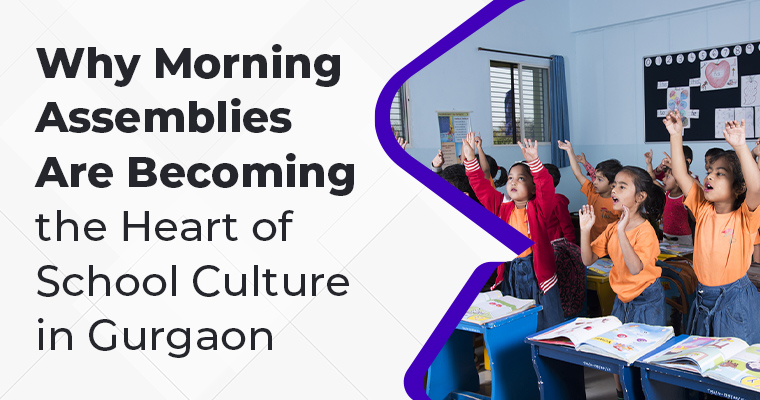
Think of a space where education is an exciting adventure, not a tiring job. This is not a fantasy, it is the impact of gamification in education; revolutionizing the way students learn, engage, and retain the information they receive.
What is Gamification in Education?
A common misapprehension about gamification is that it is just adding video games into the learning experience. This doesn’t mean gamifying every lesson, rather it means bringing in some of the elements of already established systems like points, badges, leaderboards, and interactive events that fosters participation and curiosity into the curriculum.
While conventional education techniques are effective, they sometimes fail to keep pace with a child’s transforming internal requirements to be an effective learner. On the contrary, gamification caters to their inherent instincts to compete and explore and be rewarded, thus making the learning process more engaging and fun.
How Gamification Makes Learning Better?
Here are few ways by which gamification enhances the process of learning:
Encourages Active Participation: One of the most notable advantages of using classroom gamification strategies is that they turn passive learning into an active process. Rather than passively gaining knowledge from textbooks, students become engaged in the lesson through quizzes, puzzles or role-playing instances that strengthen key concepts.
Increases Motivation and Confidence: Fear of failure is one of the main reasons that cause students to lose interest in conventional education. Gamification creates a safe space where failing is a component of the process. The points collected or attaining the next level give a sense of achievement and self-worth that makes students try again.
Improves Retention and Comprehension: According to the findings of studies, memory and understanding are better with interactive learning strategies. By making challenges game-based, when students have an emotional investment in this, they are able to keep that content in their memory for a much longer time. This is especially useful in problem-solving and critical thinking subjects.
Instills Teamwork and Cooperation: Most gamified activities are done in groups teaching students the importance of the value of teamwork, communication, and leadership. Allowing for collaboration-based experiences, whether through digital learning platforms, complete with multiplayer challenges, or the recently popularized treasure hunt in the classroom, builds social and cognitive skills.
Builds Critical Thinking and Problem-Solving Skills: Gamified education leverages puzzles, simulations, and real-world scenarios on a daily basis that compel students to engage in critical thinking and find solutions. These kinds of activities reflect what they will need to do, helping students develop the types of practical problem-solving skills required in higher education and career pathways.
Real-World Applications of Gamification in Education
Gamification is no longer something that belongs to the future; it is already changing classrooms across the globe. Here are several concrete ways that schools are incorporating it into everyday learning:
- Edtech Apps and Online Learning Platforms: Applications such as Kahoot! and Duolingo spices it up with interactive quizzes and challenges.
- Story-Centered Education: Lessons that spin around a story allow students to connect emotionally with the content, which makes abstract concepts more accessible and concrete.
- Virtual Rewards and Progress Tracking: Digital badges and achievement levels inspire children to attain milestones in their learning process.
- Problem Solving Games: Build an escape room-style experience in the classroom that requires students to complete tasks to escape for a specific duration.
- Augmented Reality (AR) & Virtual Reality (VR) Learning: It provides an immersive layer of education that allows students to visit historical sites, perform virtual science experiments, or even participate in business simulations.
Why Gamification Is Effective with Today’s Students?
Kids today are being raised in a digital world of instant feedback, interactivity and entertainment. Centres for learning and development in relatively stable environments are counterproductive. Schools can mend this gap by integrating playful learning approaches. Furthermore, gamification enhances rising educational technology trends, letting students pursue 21st-century skills like problem-solving, adaptability, and teamwork – all crucial for their success in future.
Best Practices and Challenges of Gamification Implementation
Although gamification is conveyed with a variety of benefits, it needs to be done correctly. For instance, if other students interact while using the gamified platform, it could breed over-competition or erode students’ intrinsic motivation if students are only motivated by rewards. A well-implemented system score can provide learners with a continuous reference point for their learning journey as they navigate through their educational landscape. Also, educators must be educated in how to apply effective game-based learning benefits. Therefore, the success of gamification in improving student outcomes heavily relies on seizing the psychological aspects of motivation and learning.
Conclusion
We at Gitanjali International School in Gurgaon have a firm belief that education should be as exciting as it is enlightening. Game-based learning skillset advantages are intertwined into our curriculum which means that our students are not just learning; they experience knowledge. Through innovative digital platforms or interactive classroom activities, we work to ensure that the journey of learning is an adventure that fosters curiosity and excellence.
Gamification is not only a fad – it is an educational paradigm shift. And at our school we are embracing it to create the future in which every student is engaged, empowered and excited to learn.







